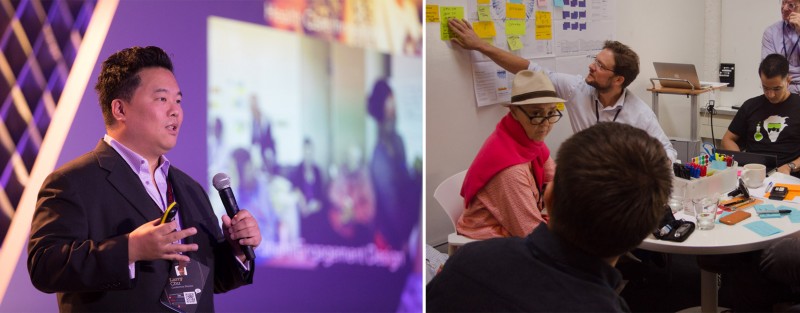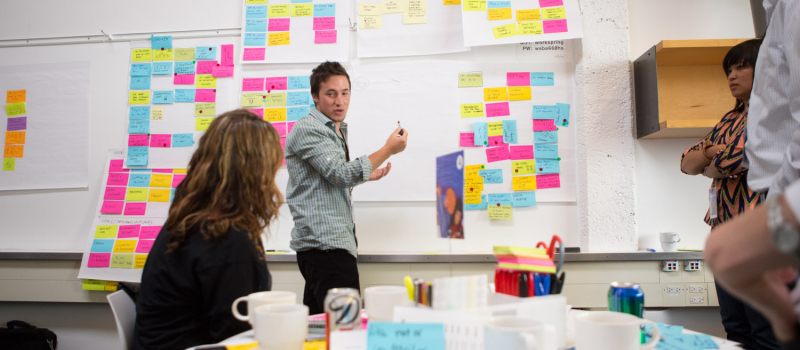

Schedule
8:00 – 8:30 AM: Arrival and Registration
8:30 – 8:50 AM: Welcoming Remarks – Loren Riskin MD, Kim Pardini-Kelly MS, RN
8:50 – 10:20 AM: Workshop: Inspiration & Framing
10:20 – 10:45 AM: Coffee Break
10:45 – 11:30 AM: Frontline Expert Panel – Cassandra Bergero, MSN, RN, CNS, FNP, Rob Lister, BEng, Leilani Schweitzer, Nick Dawson, MHA, Simon J. Mawer, LLB, GCLP
11:30 – 12:30 PM: Lunch & Keynote – Jeffrey F. Driver, JD, ARM, DFASHRM, MBA
12:30 – 1:30 PM: Workshop: Synthesis/Opportunity + Generate
1:30 – 1:50 PM: Coffee break
1:50 – 3:00 PM: Workshop: Build/Prototype
3:00 – 4:15 PM: Workshop: Share
4:15 – 4:45 PM: Keynote – Michael S. Wolf, PhD, MPH
4:45 -5:00PM: Closing Remarks – Larry Chu, MD, MS

How might we use design thinking to transform the informed consent process, affording better outcomes for patients and providers?
Numerous studies have demonstrated that the medical decision-making process fails to adequately serve both patients and providers.
What new tools and processes might be created to empower patients and providers to achieve truly shared-decision making around treatment? How might we improve patient comprehension? How might nuanced decisions that recognize ambiguity be captured? This event will demonstrate that answers lie in understanding the point of view of both the patients and the clinicians involved at the front line, and can serve both.
Treatment discussions usually culminate in a signature on a consent form; however, authorizations to treatment do not guarantee that patients have given consent with adequate knowledge or meaningful understanding. Indeed, the evidence suggests that existing informed consent processes do not adequately serve physicians in meeting either their legal or ethical obligations.
Patients tend to be motivated by a desire to overcome their medical condition and to cooperate with their physician in pursuit of that goal. Coupled with the anxiety of a foreign treatment environment, patients often do not attain adequate comprehension of or involvement in the decision making process, and fail to disclose to their physicians many of the important medical, lifestyle and other issues that might otherwise affect their treatment decisions.
The physician’s duty is to ensure that their patients adequately understand the risks, benefits, and alternatives attendant to their treatment recommendations. However, physicians are often faced with inherent obstacles to bridging the information gap. In addition to navigating health literacy deficits and the emotional states of patients, health care system operations place significant time constraints on physicians and create the need for ancillary support.

Design Thinking is a breakthrough human-centered model for innovation and problem solving that can be applied to tackle the biggest (and smallest) issues in healthcare. With a laser focus on the real needs of the end-user, Design Thinking has huge potential to help patients and providers help each unlock new and uniquely effective ideas to make medical decision making safer and more effective for all.
This special day-long Medicine X event will explore how patients, providers and industry professionals can use the tools and processes of design thinking to unlock and inspire innovation, working towards achieving perfect clinical care outcomes with zero preventable harm.

What you’ll experience
The day will be broken up between breakout workshops and plenary sessions with experts in design and patient safety.
During the workshops, you and your team will experience the whole design process, inspired by the real needs of patients and providers:
- Empathy: Learn about the unmet needs of patients and providers in the consent process using qualitative research techniques
- Define: Synthesize new insights into actionable problem statements Ideate: Brainstorm a huge number of fresh ideas inspired by real patient and provider endusers, selecting the most promising for design
- Prototype: Learn how to build and test your ideas through rapid prototyping
Our keynote sessions will explore:
- How might we bring together patients, providers and industry to advance patient safety?
- How is design being used to advance patient safety in health care across the United States?
- What are the biggest challenges patients and providers face in addressing patient safety?
- What are the biggest opportunity areas for making healthcare safety for all?

